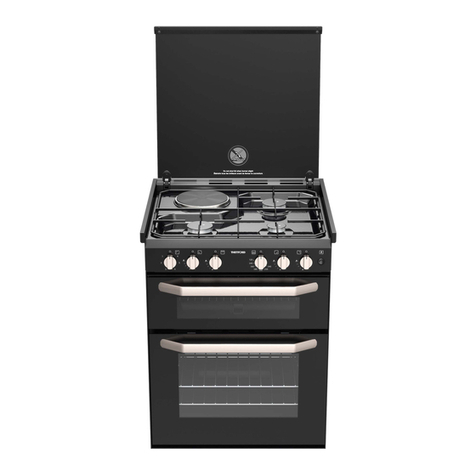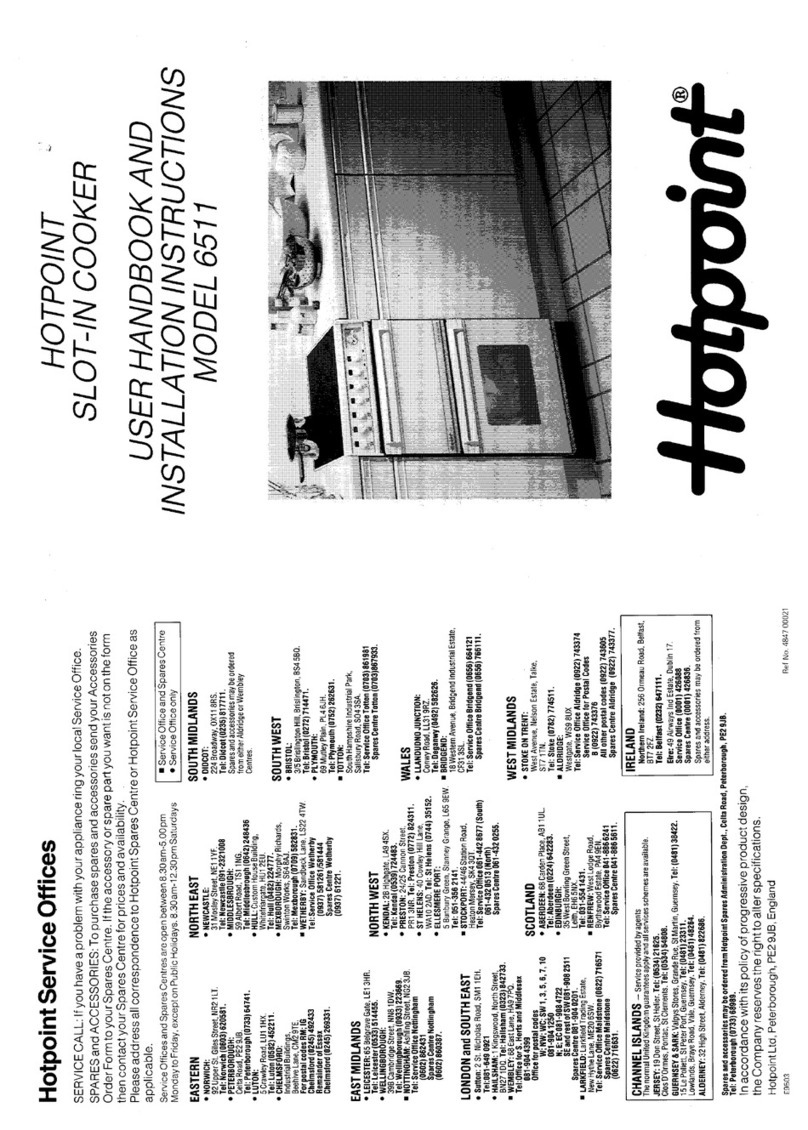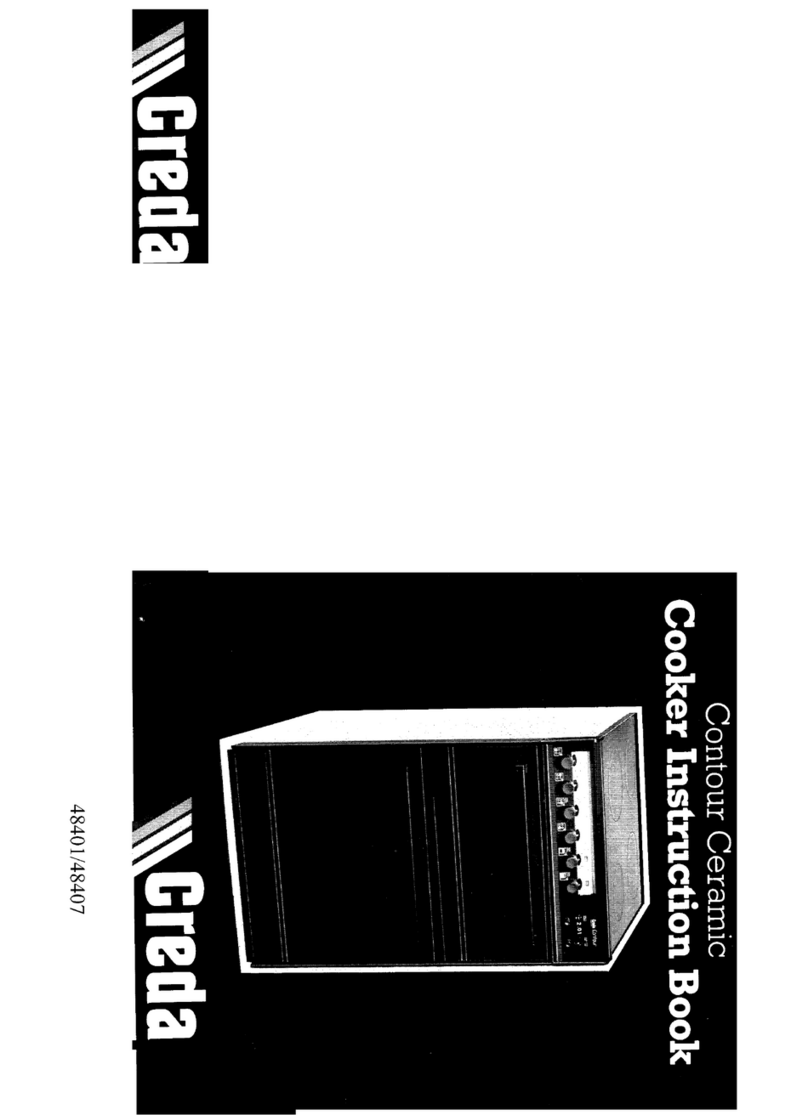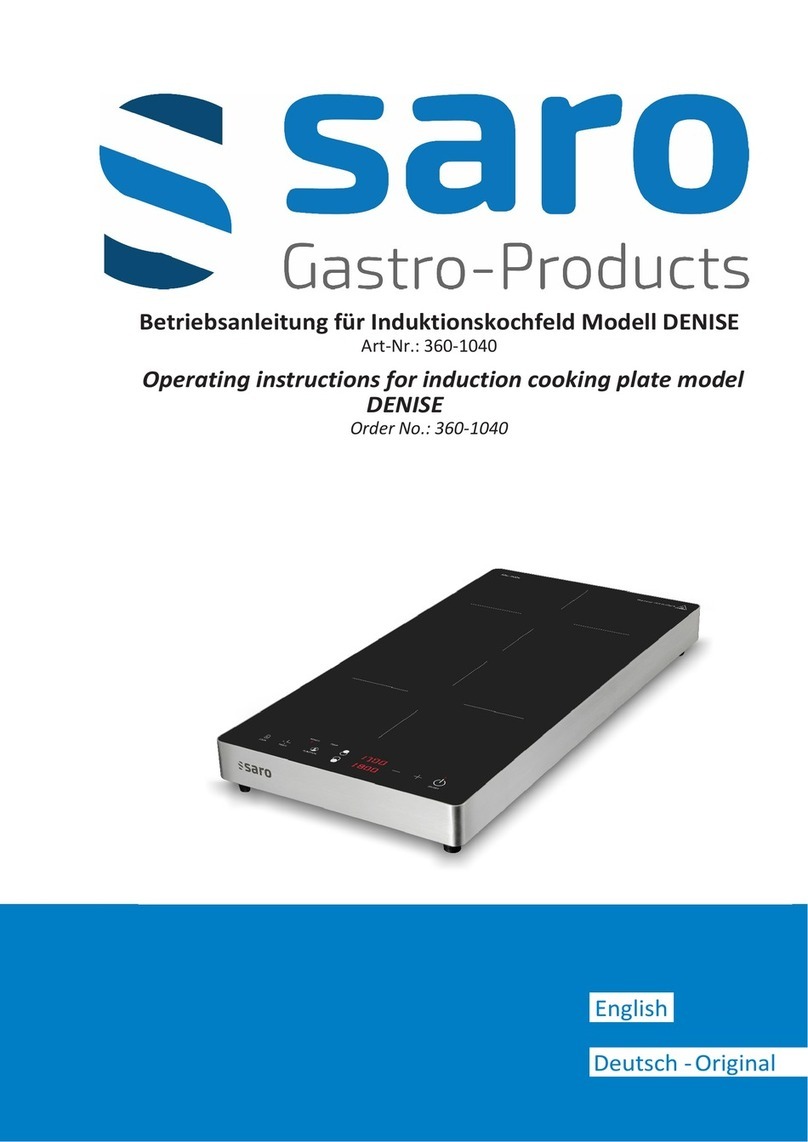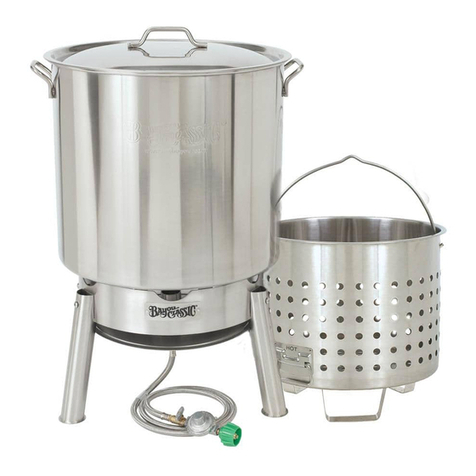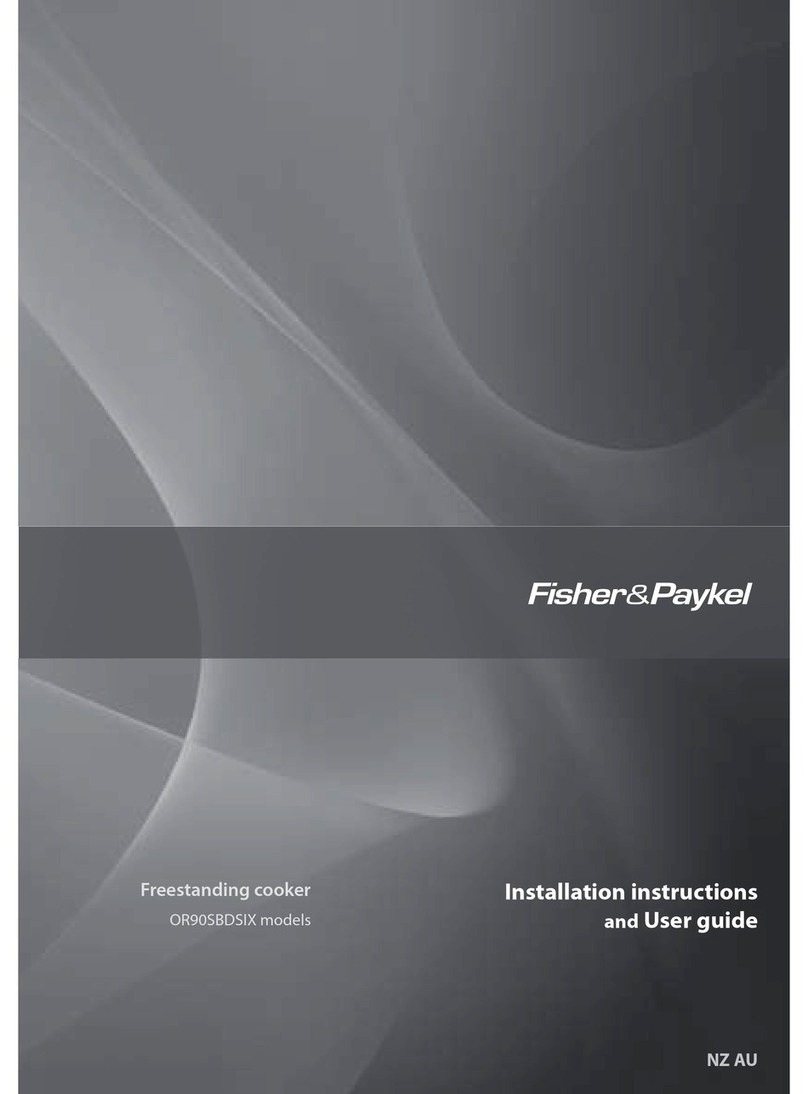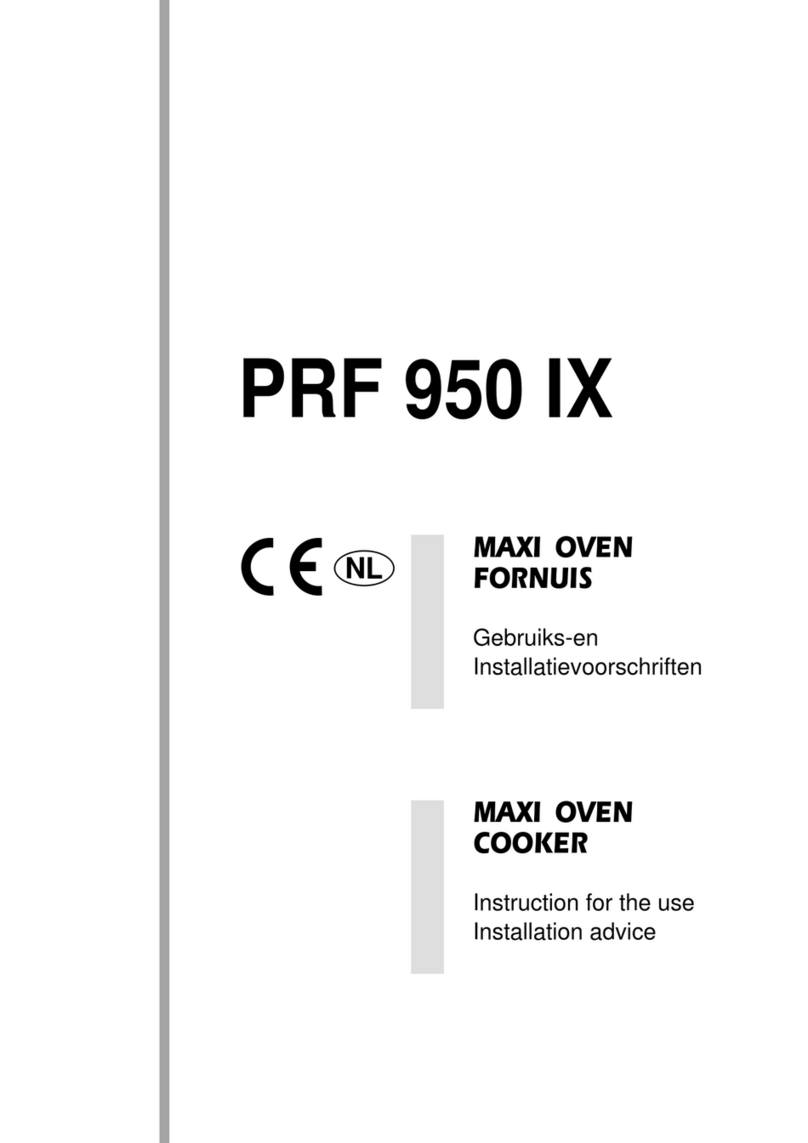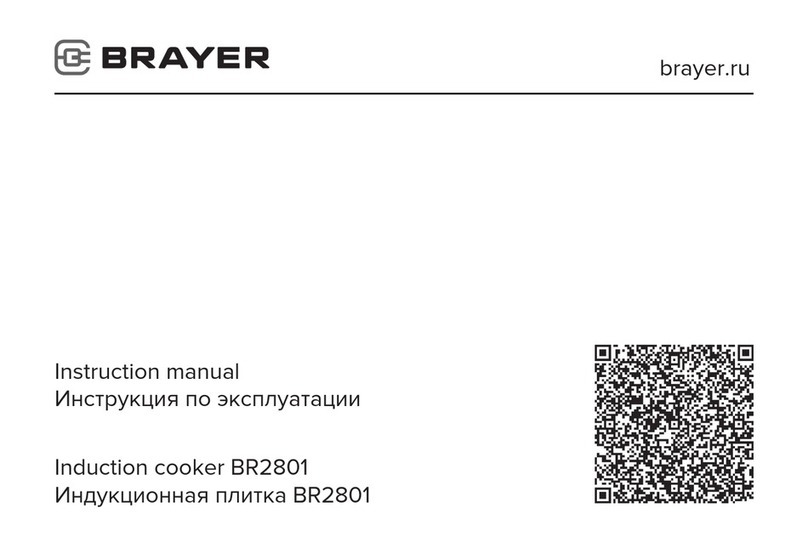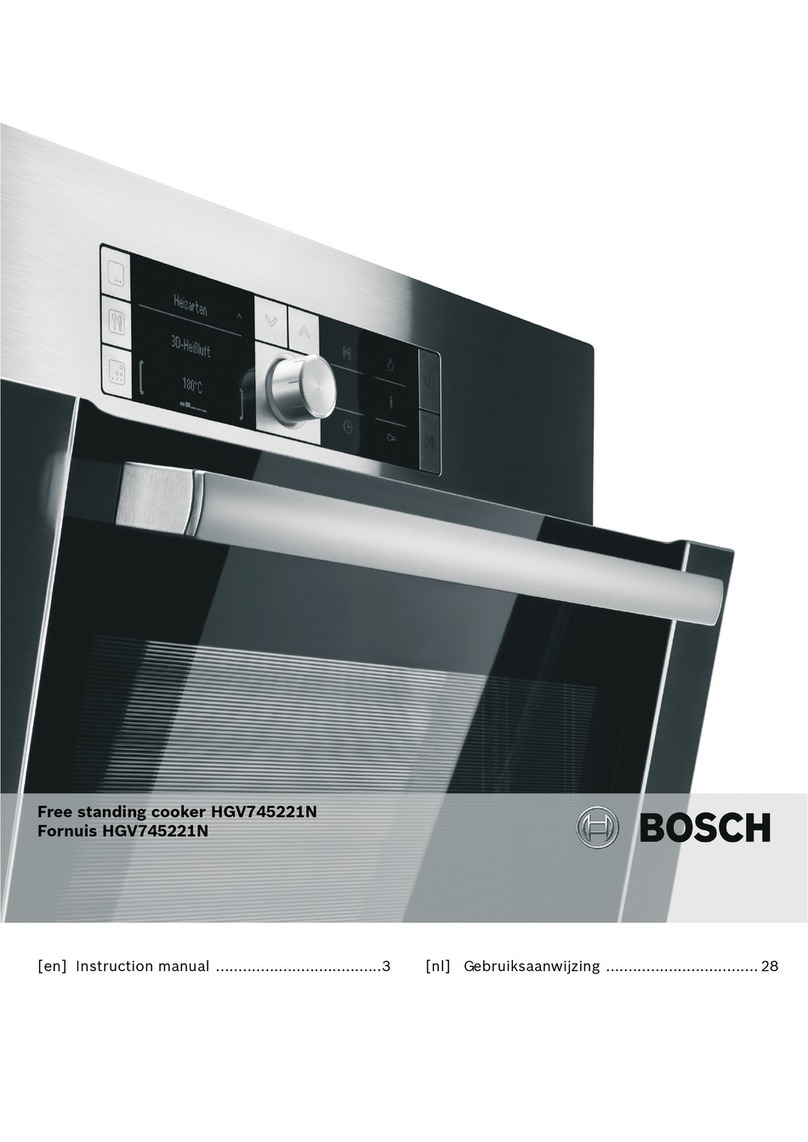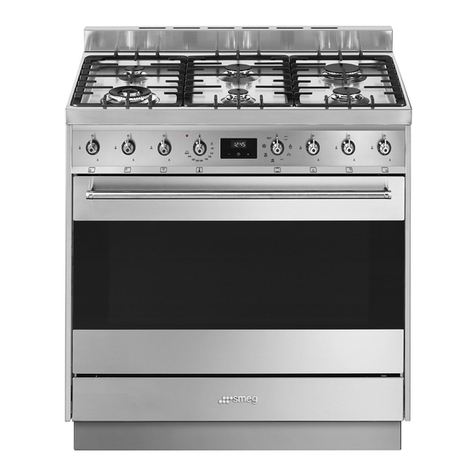
FR 20
■Ne tirez ni ne poussez le fait-tout par dessus le plan de cuisson d'une cuisinière en
vitrocérame pour éviter tout dommage sur le plan de cuisson. Le fabricant décli-
ne toute responsabilité pour les dommages causés par toute utilisation non
conforme !
■Utilisez le fait-tout uniquement sur des cuisinières / plaques de cuisson stables.
Veillez à ce que la plaque de cuisson de la cuisinière ne soit pas plus grande que le
diamètre du fond du fait-tout ! Sur les cuisinières à gaz, veillez particulièrement à ce
que la flamme ne déborde pas au-delà du fond du fait-tout. Les flammes pourraient
endommager le fait-tout ou les poignées.
■En cas d'incendie : N'éteignez pas l'incendie avec de l'eau, mais étouffez les flam-
mes avec une couverture ignifuge ou similaire !
■Veillez à ce que le liquide dans le fait-tout ne s'évapore jamais totalement pen-
dant la cuisson. Si, après la chauffe, l'apport de chaleur ne diminue pas, la vapeur
s'échappe par la soupape d'évacuation de la vapeur, ce qui diminue la quantité de li-
quide à l'intérieur. Une évaporation totale du liquide pourrait faire brûler vos aliments
et, éventuellement, causer des dommages sur votre fait-tout.
■Évitez toute surchauffe. Lors du réchauffement à l’état vide ou de l’évaporation com-
plète du liquide, le matériel peut surchauffer et être endommagé, ce qui provoque
aussi de la fumée. Dans ce cas, arrêtez immédiatement la cuisinière, retirez le fait-
tout de la cuisinière et ventilez abondamment la pièce.
■ATTENTION Risque de surchauffe ! Attention, la vitesse de chauffe des plaques à
induction est plus élevée que sur les autres cuisinières. Pendant son utilisation, ne
laissez pas le fait-tout sans surveillance.
■En raison des propriétés électromagnétiques des plaques à induction et de la vais-
selle à induction, des bruits peuvent être émis. Ces bruits sont techniquement nor-
maux et ne sont un défaut ni de la cuisinière ni du fait-tout.
■Avant chaque mise en service, vérifiez si le fond du fait-tout n’est pas endommagé.
N'utilisez pas le fait-tout présentant des rayures, des traces ou des irrégularités sur
le fond. Celles-ci pourraient endommager la plaque de cuisson.
■Pour la cuisson et le rôtissage, utilisez uniquement des ustensiles de cuis-
son et de rôtissage adaptés, comme p. ex. les spatules ou les cuillères.
Remarque : Il est possible d'utiliser des ustensiles de cuisine métalliques. Pour
que votre vaisselle ait une longue durée de vie, nous recommandons cependant
d'utiliser des ustensiles en bois ou en plastique.
■Ne versez jamais d'eau froide dans le fait-tout ou sur le couvercle de cuisson lorsqu'ils
sont brûlants. Le revêtement pourrait éclater ou le verre pourrait se fendiller.
■Ne faites pas tomber le fait-tout et le couvercle de cuisson et ne les soumettez pas
à de puissants chocs.
Consignes d‘hygiène
■L‘article peut comporter des résidus de production. Nettoyez le fait-tout et le cou-
vercle de cuisson avant la première utilisation. Veuillez respecter les remarques des
chapitres « Avant la première utilisation » et « Nettoyage et rangement ».
■Maintenez les soupapes, le couvercle de cuisson et le fait-tout toujours propres
avant et après l‘utilisation. Toutes les pièces ne doivent comporter aucune saleté ni
trace de graisse (voir chapitre « Nettoyage et rangement »).




















